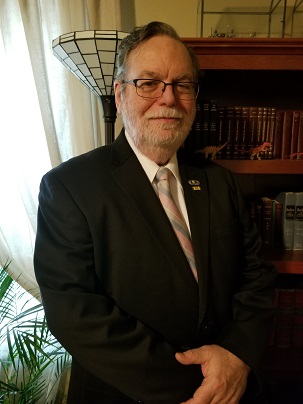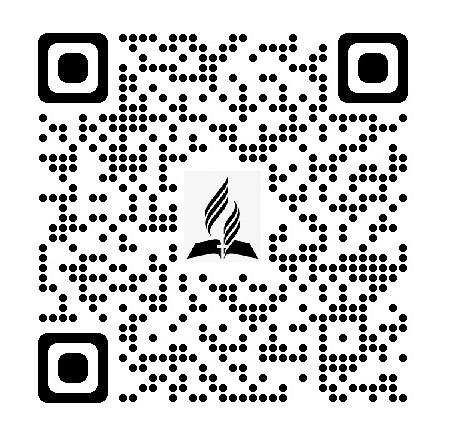
Stephen
Terry, Director


Christ's
Victory Over Death
Commentary
for the November 12, 2022, Sabbath School Lesson
 "But Christ
has indeed been raised from the dead, the firstfruits of those who have fallen
asleep."
"But Christ
has indeed been raised from the dead, the firstfruits of those who have fallen
asleep."
1
Corinthians 15:20, NIV
As Seventh-day Adventists, we
honor the biblical Sabbath instituted at Creation. We were reminded to remember
that Sabbath in the Ten Commandments given at Mount Sinai to Moses. Jesus
observed that Sabbath faithfully, and we are advised in the New Testament that
holy Sabbath was observed eighty-four times by his apostles. Notwithstanding the
many blessings given for faithful Sabbath observance in the Bible, some who consider
themselves New Testament or New Covenant Christians have swept aside that gift
of God, substituting the observance of Sunday in its stead in honor of Christ's
resurrection. There is nothing wrong with honoring Christ's resurrection, but
it is unclear why that made the death of the Sabbath a necessity.
Some have said it is because we
are no longer under the law. But everything else mentioned in the commandments
is still considered wrong - murder, adultery, worshipping idols, stealing, etc.
Why is the Sabbath the only thing that seems to have been done away with? If we
look deep into the early Christian past, there are hints as to why this became
acceptable. It was not originally to honor the resurrection. Instead because of
two Jewish revolts against Rome, Jews became persona non grata in the
Roman Empire. Early on, Christianity was seen as just another sect of Judaism
like the Essenes or the Sadducees. This meant that persecution of Christians
was understood as persecution of the Jews. Therefore, detaching from Judaism
could be a matter of life or death for early Christians. They came to realize
this by the time of the second revolt in the early second century, so Christians
refused to support that revolt. As a result, little love was lost between the
two faiths. Justin Martyr's "Dialogue with Trypho" is illustrative of the
nascent anti-Semitism following the second revolt into the mid-second century.
By the fourth century, the anti-Semitism had become institutionalized as evidenced
by the homilies of John Chrysostom. A key foundation for this was found in the "blood
curse" passage of Matthew 27:25, where the crowd (πας ο
λαος or "all the people") before
Pilate, responding to his claim to be innocent of Christ's blood proclaimed
that his blood would be upon them and their children. Anti-Semitic Christians
have been all too happy to see themselves as the instruments of bringing that
blood upon their Jewish brothers and sisters, despite Christ's adjuration to "love
your enemies." The slaughter of Jews when the Crusade retook Jerusalem, the
many pogroms against Jewish ghettos and towns, the Inquisition that forced
Jewish conversions as an alternative to burning at the stake, and the ultimate
anti-Semitism that took the lives of six million Jews in the Holocaust all have
their foundation in this early anti-Semitism. It grew from Jews who persecuted
and martyred early Christian leaders and the complete split that occurred as a
result of the Second Revolt. Much of this is chronicled in the book "Partings,
How Judaism and Christianity Became Two," edited by the late Hershel Shanks,
the former editor of Biblical Archaeology Review, along with citations of
several other sources of anti-Semitism in the writings of ante Nicene Christianity.
The result of all this
anti-Semitism is not only the evil fruit it has borne today with attacks on the
Jews and their synagogues and schools. It is also the rejection of many of the
blessings and beautiful experiences that the Bible contains but are lost to
Christians once severed from their Judaic context. The blessings attendant with
Sabbath observance is only one example. Another is the significance of the
events surrounding the resurrection of Christ, who was God incarnate, AS A JEW.
If the Jewish relationship to God was unimportant to our understanding of the
Christian experience, Jesus could have just as easily incarnated as a Roman.
God wanted us to see Jesus within that Jewish context. There was something more
to it than preaching for three and a half years and dying on a rude cross. At
this point, some might say, "Of course there was, the resurrection, the very
reason we observe Sunday instead of the biblical Sabbath!" But that response
reveals that they get the point while also missing the point. It is a glorious
hope that Jesus was resurrected on the day after Sabbath. But there is a reason
not commonly understood in anti-Semitic Christian circles.
The Passover lamb was type to
Christ's anti-typical sacrifice on the cross. Most Christians understand the
symbolism and its fulfillment here. But because of eschewing the Judaic trappings
surrounding the Passover and related festivals, they lose the greater depth of
understanding possible. For example. Jesus shared the Passover meal with his
disciples on Thursday evening. Arrested that night, he faced trial before
Pilate on what Christians now refer to as Good Friday. After that trial, he was
taken and crucified outside the city. But while he was giving up his life on
the cross to save us from sin, it was the day of preparation on two counts. It
was the day of preparation for the Sabbath, a day commonly recognized by
Sabbath keepers to this day. But it was also the day of preparation for the
week-long Feast of Unleavened Bread. The preparation for that involved seeking
out and purging any leaven from the home. Even today, some practicing Jewish
families will hide a small bit of leaven in the household for the children to
seek out and discover so they can help rid the household of leaven. The leaven
is symbolic of unrighteousness or sin. It is not simply coincidental that while
Christ was dying upon the cross in preparation for a sinless world to come, the
Jews were going through their houses to symbolically accomplish a similar task.
We should also note that the Festival
of Firstfruits begins during Passover, typically on the second day of Passover.
But the second day of the Passover the year Jesus died was Sabbath, so the festival
began a day later, on Sunday, the day of Jesus' resurrection. Just as the
festival needed to wait another day in order to honor the Sabbath, Jesus also
rested in the tomb over Sabbath in harmony with the commandment. As Paul wrote
to the Corinthian church, he saw the connection and referred to Christ's
resurrection as the firstfruits of all those to be resurrected from sleeping in
their graves. Forty-nine days later, the Festival of Firstfruits concludes at a
time we now call Pentecost. Since it began on the Sunday of Christ's
resurrection, it would end on a Sabbath seven weeks later, making it a high
Sabbath which explains the large crowds present from the diaspora that heard
Peter preach, calling for repentance in the second chapter of Acts. It may also
not be coincidental that as Jesus spanned three days in the grave, the Festival
of Firstfruits is the only Jewish holiday to span three months.
When the Festival of Firstfruits
begins, an omer of a lesser grain, such as barley is presented in offering at
the temple. This begins the process known today as the Counting of Omers each
day over a fifty-day cycle. In some ways, Christians may see similarities to
Advent when they count the days to Christmas though at a different time of
year. The Festival of Firstfruits concludes with the offering of an omer of
wheat, considered the most desirable of grains. If we consider the harvest of
the righteous from the earth as the antitype all of this points toward, then we
may see Christ's sinless death in the light of the leaven removed from Jewish
homes. His resurrection delayed over Sabbath honored a rest created from the foundation
of the world to be a blessing. When he rose on Sunday, the life force was so powerful
that many others rose as well. But this was a lesser offering, the omer of
barley. Thus began the Counting of Omer to the final greater harvest. The
pouring out of the flames of the Holy Spirit at that time was divine recognition
of the inevitability of that later harvest coming to fruition.
We associate the symbolism of
Revelation with the Parousia and the Apocalypse, but we can misinterpret some
of that symbolism without understanding the Jewish context of those symbols.
Revelation, chapter 14, repeatedly refers to a sickle being used by Christ and
angels to harvest the earth. It even says a sharp sickle. We read that and
assume sharpness as in a weapon, but in reality, we are simply seeing the
anti-typical final harvest symbolized by the final omer of the Festival of
First Fruits as offering the best harvest, those attending that final festival
that repented and came to join with the apostles in fellowship with Christ. This
may seem terrible to the lost who have spurned whatever opportunities they had
to be a part of that blessed harvest, but to those who are being harvested to
be presented to God as redeemed from the earth, it is a joyous event. It is a
celebration with even more happiness than the joy of a successful harvest of actual
grains in ancient Israel.
We make a mistake when we seek
to abandon the Judaic context of our faith and function as though all of that
has passed away because of a new covenant. The bad blood that existed between
Jews and Christians from the early days of our faith is not an excuse. Jesus believed
we could be better than that when he told us to love our enemies. He was right.
We can.